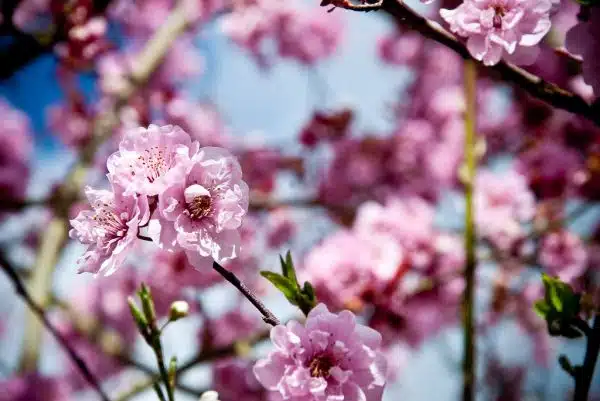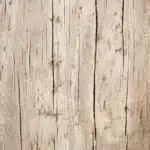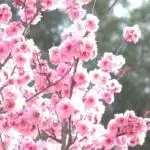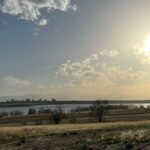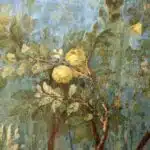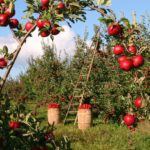Cherry trees are a popular choice for home gardeners and orchard owners alike due to their stunning springtime blooms and delicious fruit. However, in order to maintain the health and productivity of a cherry tree, proper pruning techniques must be employed. Pruning helps to remove dead or diseased wood, shape the tree for better sunlight exposure, and promote fruit production. In this article, we will explore the essential steps for pruning a cherry tree to ensure its longevity and maximum yield.
As a horticulturalist or arborist, understanding the specific needs of different tree species is crucial for maintaining their health and vitality. Cherry trees require specialized care and attention when it comes to pruning as they have unique growth habits that can affect fruit production if not properly maintained. While pruning may seem daunting at first, with the right knowledge and tools at hand, it can be a fulfilling task that enhances both the beauty and productivity of your cherry tree. Whether you are new to gardening or an experienced orchardist, learning how to prune a cherry tree is an essential skill that will benefit both you and your community by providing healthy produce for years to come.
Understanding Cherry Tree Growth Habits
Cherry trees are among the most beautiful and popular fruit-bearing trees commonly grown in gardens. Understanding cherry blossom and pruning for optimal fruit production is essential to achieve a bountiful harvest each year. Cherry trees usually grow up to 20-25 feet tall, with a spread of 15-20 feet, and their growth habit varies depending on the cultivar.
The main types of cherry trees are sweet cherries and sour cherries, each having specific growth habits. Sweet cherries usually grow more upright than sour cherries, which have a more spreading form. The optimal time for pruning cherry trees is during their dormant period, between late fall and early spring when they shed all their leaves. Pruning at this time allows you to see the tree’s structure clearly, making it easier to identify dead or diseased wood that needs removing.
To understand how best to maintain your cherry tree’s health and productivity, you need first to understand its growth habits. By recognizing the differences between sweet cherry trees and sour cherry trees’ growth patterns, you can select the most suitable pruning method for your tree type. Additionally, timing your pruning during the dormant season will ensure that your tree remains healthy by eliminating dead or diseased wood before it can cause further damage.
Identifying Dead Or Diseased Wood
Understanding the growth habits of a cherry tree is crucial to properly pruning it. Before beginning the pruning process, it is essential to identify healthy branches that should be kept intact. These branches are typically those that grow out from the trunk at 45-degree angles and have good spacing between them. It is also important to consider the overall shape of the tree and ensure that it is balanced.
Identifying dead or diseased wood in a cherry tree is vital for its health and longevity. Common cherry tree diseases include black knot, brown rot, and bacterial canker. Dead or diseased wood can be identified by its lack of leaves or fruit production, discoloration, and bark that easily falls off. Removing these damaged parts of the plant will prevent further spread of disease and promote new growth.
To successfully prune a cherry tree, obtaining the right tools is crucial. Tools such as sharp pruning shears, loppers, and saws are necessary for removing branches safely without causing damage to the plant. It is also important to disinfect tools before using them on different parts of the tree to avoid spreading disease. With proper identification techniques and adequate tools, pruning a cherry tree can be an effective way to promote healthy growth and improve fruit production without harming the plant’s overall health.
Obtaining The Right Tools For Pruning
Choosing the Right Equipment
To successfully prune a cherry tree, it is essential to have the right tools. The type of pruning tool you choose depends on the size and age of the tree, as well as your personal preference. For smaller trees, handheld pruners are typically sufficient. However, for larger trees or thicker branches, a pruning saw may be necessary.
Maintaining Your Pruning Tools
Once you have selected your pruning tools, it is crucial to maintain them properly. This will ensure that they remain sharp and effective for future use. To maintain your pruning tools, regularly clean them after each use and sharpen them when necessary. Additionally, store them in a dry place to prevent rusting.
Properly maintaining your pruning tools will not only extend their lifespan but also improve their effectiveness. When using dull or damaged tools, you risk injuring both yourself and the tree. By taking care of your equipment, you can ensure that your cherry tree is pruned safely and effectively.
Transition:
Now that you have obtained the appropriate equipment and know how to maintain it correctly let us discuss timing your pruning for optimal results.
Timing Your Pruning
To ensure the health and productivity of your cherry tree, it is important to prune it at the right time. Pruning at the wrong time can lead to unnecessary stress on the tree, which can cause reduced fruit production or even permanent damage. The best time for pruning depends on the type of cherry tree you have and your location.
For sweet cherry trees, the best time to prune is in late spring or early summer after harvest. This allows you to remove any dead, diseased or damaged branches while also shaping the tree for future growth. For sour cherry trees, it is best to prune in late winter while the tree is still dormant. This will help prevent disease by allowing air flow through the canopy and sunlight penetration into the center of the tree.
Pruning techniques can vary depending on your goals for your cherry tree. However, there are some general rules to follow. Always use clean and sharp tools to make clean cuts that heal quickly. Avoid removing more than 25% of a tree’s canopy in one season as this can cause undue stress on the plant. Additionally, consider thinning out crowded branches rather than just cutting them back as this promotes better air flow and light penetration.
| Best Time | Sweet Cherry Tree | Sour Cherry Tree |
|---|---|---|
| Season | Late Spring/Early Summer After Harvest | Late Winter While Dormant |
| Purpose | Remove Dead/Damaged Branches and Shape Tree for Future Growth | Prevent Disease by Allowing Air Flow and Sunlight Penetration |
As you prepare to prune your cherry tree, keep in mind that proper timing is essential for its health and productivity. Consider both the type of cherry tree you have and your location when deciding when to prune. Additionally, be mindful of proper pruning techniques such as using clean tools and avoiding excessive removal of branches. With these considerations in mind, you can help ensure a successful pruning process that will benefit your cherry tree for years to come.
Preparing To Prune
Before pruning your cherry tree, it is important to prepare yourself and your tools. Pruning techniques vary depending on the size and age of the tree, but there are some general safety precautions that should be followed. First, wear protective clothing such as gloves, eye protection, and long sleeves to protect yourself from any sharp branches or debris. Second, ensure that all tools are clean and sharp before use to avoid damaging the tree.
Once you have taken proper safety precautions, consider which pruning technique will best suit your cherry tree. Some common techniques include thinning cuts, heading cuts, and renewal cuts. Thinning cuts involve removing entire branches back to the trunk or a main branch. This technique is useful for removing dead or diseased wood and improving airflow throughout the canopy. Heading cuts are made at a bud or lateral branch and encourage new growth in a specific direction. Renewal cuts involve removing old wood to encourage new growth from the base of the tree.
When preparing to prune your cherry tree, remember that each cut you make will affect its growth and overall shape. Take your time and carefully consider each cut before making it. With proper preparation and pruning techniques, you can help your cherry tree grow healthy and strong for years to come.
As you prepare to make the first cut on your cherry tree, keep in mind that this is just one step in an ongoing process of maintenance and care. By following proper safety precautions and choosing appropriate pruning techniques, you can help your tree thrive while maintaining its natural beauty and shape. In the next section, we will discuss how to make that first cut with confidence and precision.
Making The First Cut
A crucial aspect of pruning cherry trees is making the first cut. It is essential to note that the angle of cut plays a significant role in determining the success of this process. According to a study conducted by horticultural experts, pruning cuts made at an angle between 45 and 60 degrees have a higher chance of triggering new growth than those made at any other angle.
Safety measures are also essential when making the first cut. Before starting, ensure that you have on protective gear, including gloves and eye goggles. Also, make sure that you use sharp pruning shears to minimize injury. Additionally, ensure that you are not standing under the branch you intend to prune as it may fall on you accidentally.
To make the first cut, identify the branch collar – the swollen area where the branch meets the trunk- and make a shallow undercut approximately six inches from it. Next, move about one inch further from your initial point and saw through the branch from above until it falls off naturally. Remember always to make smooth cuts without leaving any jagged edges or stubs as they create an entry point for diseases and pests.
Cutting Branches To The Right Length
When cutting branches of a cherry tree, it is important to consider the branch structure and pruning techniques. One common technique is to cut back the branch by one-third of its length, making sure to cut just above a bud that is facing away from the center of the tree. This helps to promote growth in the desired direction and prevents overcrowding.
Another technique is called “heading back,” which involves cutting off the end of a branch to encourage new growth lower down on the branch. This is useful for shaping the tree or redirecting growth in a specific direction. It is important to make sure that heading cuts are made just above a bud, leaving no stubs that could invite disease or pests.
When cutting branches to the right length, it is crucial to use sharp pruning shears or saws and make clean cuts. Ragged cuts can create openings for pathogens that could harm the tree. Additionally, it is important not to remove too much of the tree’s canopy at once, as this can shock it and hinder growth.
Pruning Techniques:
- Cut back branches by one-third of their length
- Make heading cuts just above buds
- Use sharp pruning tools
- Avoid removing too much canopy at once
As horticulturalists or arborists, our ultimate goal when pruning cherry trees is not only aesthetic improvement but also maintaining and improving its health. Therefore, understanding different techniques for cutting branches and being mindful of branch structures are essential skills in achieving this goal without putting undue stress on the plant.
Moving forward, we will discuss another vital step in properly pruning cherry trees: removing suckers and water sprouts. These unwanted shoots arise from rootstock rather than fruiting wood and need removal as they can be detrimental to both yield and overall plant health if left unattended.
Removing Suckers And Water Sprouts
Cherry trees can produce several types of growth, including suckers and water sprouts. Suckers are shoots that grow from the base of the tree, while water sprouts grow vertically from a branch. These types of growth can weaken the overall structure of the cherry tree, reduce yield, and make it more susceptible to diseases. Therefore, removing suckers and water sprouts is an essential aspect of cherry tree pruning.
Pruning frequency for suckers and water sprouts depends on the age and health of the tree. Younger trees may require more frequent removal to encourage proper branching and growth patterns, while mature trees only require occasional maintenance pruning. Neglecting to remove these growths can result in a dense canopy that limits air circulation, light penetration, and fruit production. However, corrective pruning can help restore the shape and vigor of an overgrown or neglected cherry tree.
To remove suckers and water sprouts, use sharp pruning shears or loppers to make clean cuts as close as possible to the trunk or parent branch without damaging the bark. Avoid cutting too close or leaving stubs that may invite pests or disease into the cherry tree. Regularly inspecting your cherry tree for sucker and water sprout growth will help maintain its overall health and productivity.
As important as it is to remove suckers and water sprouts in cherry trees, it is also crucial to avoid over-pruning them. Over-pruning can cause stress on a cherry tree by reducing its foliage surface area that helps with photosynthesis – diminishing its ability to produce energy through sunlight absorption. The next section will discuss how you can avoid over-pruning your cherry trees while still maintaining their ideal height and shape.
Avoiding Over-Pruning
Pruning mistakes can be costly and detrimental to the health of a cherry tree. Over-pruning, for example, can remove too many branches and leaves, leading to a weakened tree that is more susceptible to diseases and pests. It is crucial to prune only what is necessary and not get carried away with the pruning shears.
Proper pruning techniques involve making clean cuts at the right angle and location on the tree branch. A horticulturalist or arborist knows exactly where to cut so that the wound heals quickly without leaving any stubs or exposing too much of the tree’s inner tissue. As a result, the cherry tree will be able to grow new branches and leaves in no time.
To avoid over-pruning, it is essential to have a clear plan before starting. Decide which branches need cutting and which ones should remain intact. Don’t remove more than 25% of the tree’s foliage during one pruning session, as this can cause undue stress on the plant. By following these guidelines, you’ll ensure that your cherry tree remains healthy and productive for many years to come.
Moving forward into dealing with large limbs, it’s important to understand how to make proper cuts without damaging other areas of the tree.
Dealing With Large Limbs
Avoiding over-pruning is crucial when it comes to cherries. However, sometimes large limbs need to be removed from the tree, and this can pose challenges for the pruner. Dealing with obstacles, such as power lines and other trees nearby, requires additional safety precautions.
Before making any cuts, assess the situation and identify any potential hazards. It’s essential to wear appropriate protective gear, including gloves and eye protection. If dealing with a large limb that is near power lines, call a professional arborist who has experience working around electrical wires.
When it comes to removing large limbs, follow these steps:
- Make an undercut on the bottom of the limb approximately 12-18 inches from the trunk. Cut upwards through the limb until you reach the undercut, then remove the limb.
- After removing most of the weight of the limb, make your final cut just outside of the branch collar (the swelling where the branch joins the trunk).
- Do not leave any stubs or jagged edges as this can lead to disease or insect infestations.
- Finally, treat any wounds with a pruning sealant.
Making final cuts on cherry trees can be tricky, but with proper safety precautions and attention to detail, it can be done successfully without causing further harm to your tree’s health and structure.
Making Final Cuts
As the pruning process comes to an end, it is crucial to make final cuts that promote the tree’s health and fruit production. The last cuts should be made just above the bud and at a slight angle away from it, allowing water to run off easily. This technique, known as heading back, helps the tree develop new shoots near the cut area, which will eventually bear fruit.
Common mistakes when making final cuts include leaving stubs or cutting too close to the bud. Stubs can die back and create entry points for diseases, while cutting too close may damage the bud or leave insufficient space for regrowth. It is also important not to remove more than 25% of a tree’s canopy in one season as this can cause excessive stress on the tree and affect its long-term health.
Alternative techniques such as drop-crotch pruning or thinning cuts can also be used depending on the type of cherry tree and its growth pattern. Drop-crotch pruning involves removing entire branches that are growing vertically upwards from another branch. Thinning cuts selectively remove small branches throughout the canopy to allow more light penetration and air circulation. These techniques can have a positive impact on fruit production and long-term tree health by promoting even growth and reducing potential disease spread.
Transitioning into treating pruning wounds, it is important to note that proper care of these wounds can aid in preventing infection or decay. Leaving large open wounds without treatment exposes the tree to potential pathogens that could eventually lead to death. In order to protect your cherry tree from harm, appropriate wound dressing should be applied immediately after making final cuts.
Treating Pruning Wounds
Once the final cuts have been made on your cherry tree, the next step is to promote healing and prevent infection. This is crucial for the overall health and growth of your tree. One important aspect of preventing infection is to avoid pruning during wet weather, as moisture can increase the likelihood of disease spread. It’s also important to use sterilized tools when pruning, as this reduces the risk of introducing bacteria or fungi into open wounds.
To promote healing after pruning, there are a few things you can do. First, make sure to leave a small collar at the base of each cut. This collar contains specialized cells that help with wound closure and protect against decay. Additionally, you can apply a wound sealant or dressing to larger cuts to help prevent moisture loss and further reduce the risk of infection. Finally, water your cherry tree regularly in the weeks following pruning to support new growth and recovery.
Preventing infection and promoting healing are critical steps in maintaining a healthy cherry tree. By following these guidelines, you can help ensure that your tree remains strong and productive for years to come.
- Apply a thin layer of compost around the base of your cherry tree after pruning.
- Consider using organic pest control methods instead of chemical pesticides.
- Monitor your cherry tree closely in the weeks following pruning for any signs of disease or stress.
As you finish up with your pruning task, it’s important not to overlook cleaning up branches and debris from around your cherry tree. Leaving fallen branches or other debris on the ground can attract pests or harbor disease-causing organisms that could harm your tree. Be sure to dispose of all pruned branches properly and remove any other debris from around the base of your cherry tree. With proper care and attention after pruning, you can help ensure that your cherry tree thrives for years to come.
Cleaning Up Branches And Debris
The removal of dead branches is an important part of pruning a cherry tree. It is essential to use an appropriate pruning tool, such as a pruning saw or shears, to ensure safe and effective removal. All debris should be disposed of in a proper and responsible manner to avoid any negative impacts on the environment. Additionally, proper disposal of debris can help to maintain the safety of the surrounding vegetation and wildlife.
Removing Dead Branches
When pruning a cherry tree, removing dead branches is an essential task that should be done regularly. Dead branches can pose a risk to the health of the tree as they can become infected by diseases or pests. By removing these branches, you are not only preventing potential harm to your tree but also promoting its growth and productivity.
Pruning benefits the cherry tree in many ways such as improving air circulation and light penetration into the canopy, which can reduce the incidence of fungal diseases. When there are dead or diseased branches present, they block sunlight and airflow, creating ideal conditions for fungi to grow. By removing these branches, you are reducing the chances of infection and ensuring that your cherry tree remains healthy.
Cherry tree diseases such as brown rot or bacterial canker can spread quickly through dead wood. Therefore, it is crucial to remove any dead or diseased wood thoroughly during pruning. As a horticulturist or arborist, it is essential to emphasize how important it is to prune correctly and regularly to prevent any further damage to your cherry tree. With proper care and maintenance, your cherry tree will thrive and produce beautiful fruit for years to come.
Disposing Of Debris
As horticulturists and arborists, we understand the importance of pruning and maintaining cherry trees to ensure their optimal growth and productivity. While pruning helps prevent diseases and promotes healthy growth, it also generates debris that needs to be disposed of correctly. Incorrect disposal can lead to the spread of diseases or pests, which can harm other plants or trees nearby.
One option for disposing of cherry tree debris is composting. Composting offers a sustainable way to dispose of organic matter while also producing nutrient-rich soil. When composting cherry tree debris, it is essential to balance carbon-rich brown material such as dead leaves and nitrogen-rich green material such as fresh pruned branches. Mixing these materials with water and air will speed up the decomposition process, resulting in high-quality compost.
Another option for using cherry tree debris is by incorporating it into landscaping. Branches can be chipped into mulch that can be used around flower beds or as a protective layer over garden soil. This mulch helps retain moisture in the soil, suppress weed growth, and regulate soil temperature. Additionally, larger branches can be used creatively in landscaping projects such as creating borders or decorative structures. Disposing of cherry tree debris responsibly not only benefits your garden but also contributes to a greener environment overall.
Monitoring Your Tree’s Progress
After pruning your cherry tree, it is important to monitor its growth. Measuring growth can give you an idea of the effectiveness of your pruning techniques and help you adjust them accordingly. One way to measure growth is by observing the length of new shoots. If they are shorter than expected, it may indicate that the tree needs more pruning.
Another way to monitor your tree’s progress is by paying attention to its overall health. A healthy tree will have bright green leaves, while a sickly tree may have yellowing or drooping leaves. If you notice any signs of disease or infestation, it is important to address the issue promptly before it spreads throughout the tree.
Adjusting pruning techniques can also be done based on the shape and size of the tree. As the cherry tree grows, you may need to adjust your pruning strategy to maintain its desired shape and size. For example, if the tree is becoming too tall or wide for your space, you may need to prune more aggressively or selectively remove branches that are growing in undesirable directions.
By monitoring your cherry tree’s growth and adjusting your pruning techniques as needed, you can ensure that it continues to thrive and produce delicious fruit for years to come. In the next section, we will discuss how to enjoy the fruits of your labor and properly care for your harvested cherries.
Enjoying The Fruits Of Your Labor
Transition: Now that you have monitored your cherry tree’s progress, it is time to focus on maximizing yield and preserving fruit quality. Pruning is an essential practice that horticulturists and arborists use to control the growth of trees and increase their productivity. Just like how a chef trims excess fat from meat to enhance its flavor, pruning helps cherry trees concentrate their resources on producing high-quality fruit.
Pruning should be done during the dormant season when the tree is not actively growing, typically between late fall and early spring. The goal of pruning is to remove any dead, damaged or diseased wood as well as thinning out crowded branches to allow for better sunlight penetration and air circulation. It is crucial to make clean cuts close to the branch collar without damaging the bark or leaving stubs that can become entry points for pests and diseases.
As you prune your cherry tree, keep in mind that over-pruning can be detrimental to its health and fruit production. A good rule of thumb is never to remove more than 20% of the tree’s canopy in one year. Remember that every cut you make will affect next year’s crop, so aim for balance and moderation. By taking care of your cherry tree through proper pruning techniques, you are not only maximizing its yield but also preserving the quality of its fruits for years to come.
Outro: With these pruning tips in mind, you are one step closer to enjoying a bountiful harvest from your cherry tree. As with all things related to gardening, patience and attention are key factors in achieving success. Remember that healthy trees equal healthy fruits, so take the time to care for your cherry tree throughout the year. In the next section, we will explore ways to enjoy the fruits of your labor once they are ripe and ready for picking!
Conclusion
The art of pruning cherry trees is an essential aspect of tree maintenance. It involves a keen understanding of the tree’s growth habits, the right tools, and timing. Proper pruning not only helps keep your tree healthy but also encourages fruit production.
Identifying and removing dead or diseased wood is crucial for the health of the cherry tree. Obtaining the proper tools such as sharp and clean pruners, loppers, and saws ensures that you make precise cuts that do not damage the bark. Timing is critical because pruning at the wrong time can lead to stunted growth or increased susceptibility to disease.
Pruning wounds should be treated with care to prevent infections that can harm your cherry tree. Cleaning up branches and debris after pruning is vital in preventing pest infestations. Monitoring your tree’s progress after pruning can help detect any problems early on.
In conclusion, proper cherry tree pruning requires knowledge, patience, and attention to detail. As a horticulturist or arborist, it is essential to understand the unique needs of each species and provide appropriate care for optimal growth. By following these guidelines, you can enjoy a healthy and fruitful cherry tree for years to come. Are you ready to take on the challenge?
Image Credits
- “Cherry Tree” by taylor.a (featured)

